The Many Forms of Durga
- October 17, 2020

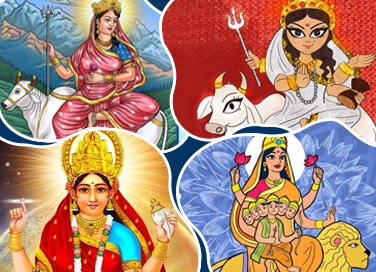
The Many Forms of Durga
- October 17, 2020
According to the Puranas, Goddess Durga was born from the powers of the supreme trinity, Brahma, Vishnu and Shiva, to defeat the powerful buffalo demon, Mahishasura. Because she is a consolidation of their collective energy, she is also known as Shakti and is greater than any of them. Perceived as Devi and the Goddess Parvati, Goddess Durga is the creator and the protector of the universe and the destroyer of evil, the perfect confluence of the Hindu trinity. She is usually depicted as having eight to ten arms, with just as many weapons gifted to her by various gods to destroy Mahishasura. Her mount is usually a lion or a tiger.
Goddess Durga has many forms, nine manifestations to be exact, together called Navadurga. They are worshipped during the nine days of Navratri in the order below, with different prayers dedicated to each Navadurga during the festival.
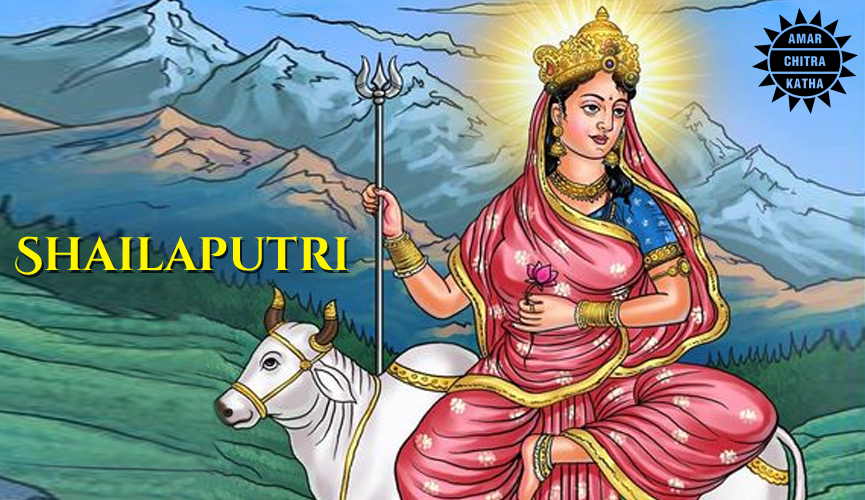
Sati was reborn to Lord Himavan, the mountain king, as Goddess Parvati in her next birth. She was also called Shailaputri, meaning ‘daughter of the mountain’. She later married Lord Shiva. Her vehicle is a bull.
To receive more such stories in your Inbox & WhatsApp, Please share your Email and Mobile number.
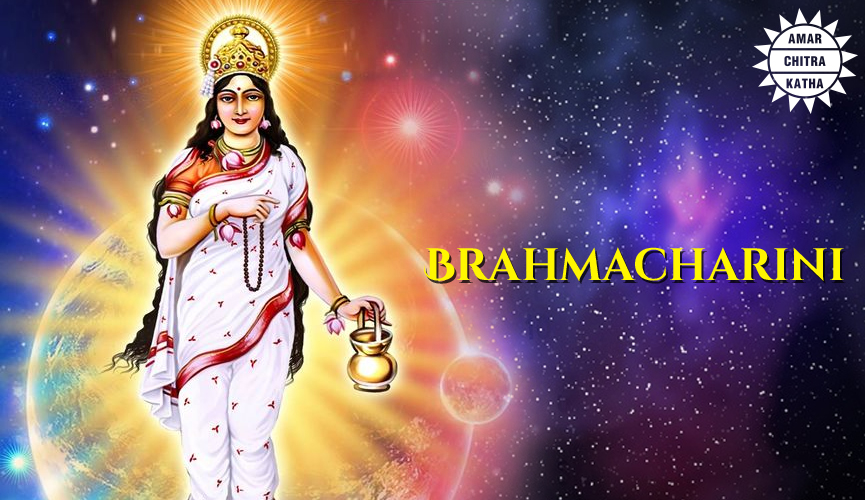
Born to Prajapati Daksha, this mother goddess is the form of Goddess Parvati called Sati. She was determined to marry Lord Shiva. In order to fulfil her aim, she performed severe penance. Pleased by her faith and devotion, Lord Brahma stated that her unmarried form will be worshipped as Brahmacharini, the ascetic woman. Eventually, she did get married to Lord Shiva, but during a subsequent ceremony, her father insulted Shiva. Furious, she immolated herself with a wish to have a father who would respect her divine husband and her in her next birth. Brahmacharini is depicted having two hands and walking bare feet.
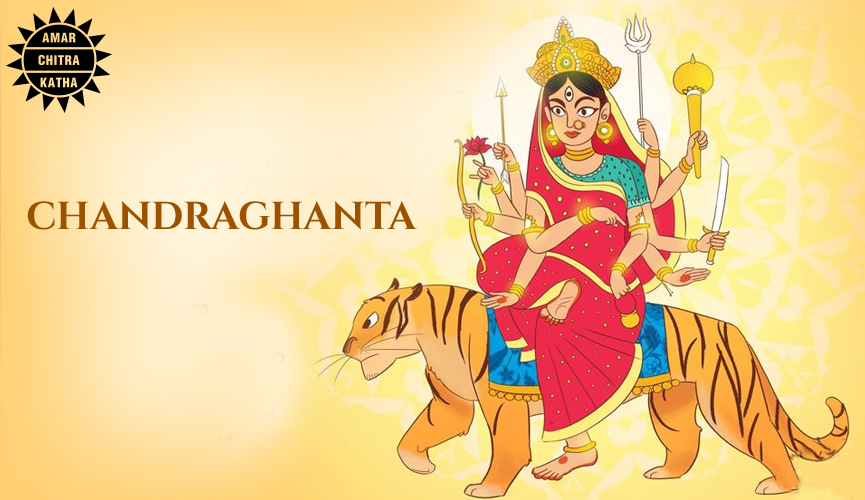
After getting married to Shiva, Goddess Parvati adorned a bell on her forehead in the shape of a half-moon, signifying the origin of this Navadurga’s name. Her mount is the tigress and she has ten hands.
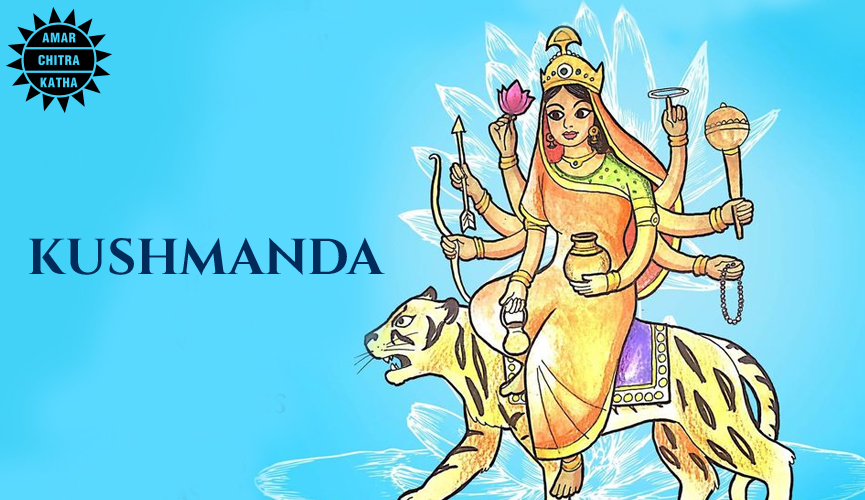
When Siddhidhatri took a physical form, she created the universe from her smile. ‘Ku’ means ‘a little’, ‘Ushma’ means ‘warmth’, and ‘Anda’ indicates the ‘cosmic egg’. Goddess Kushmanda had started living in the center of the sun, helping him radiate energy. She has eight hands and rides a tiger.
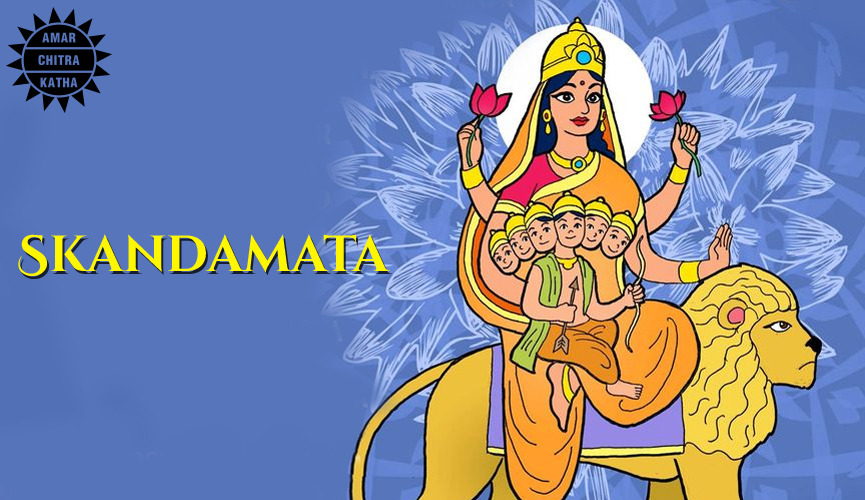
Goddess Parvati is the loving and kind mother of Skanda or Kartikeya, the god of war and brother to Lord Ganesha. The maternal nature of Goddess Parvati is worshipped in this form. The ferocious lion serves as her mount.
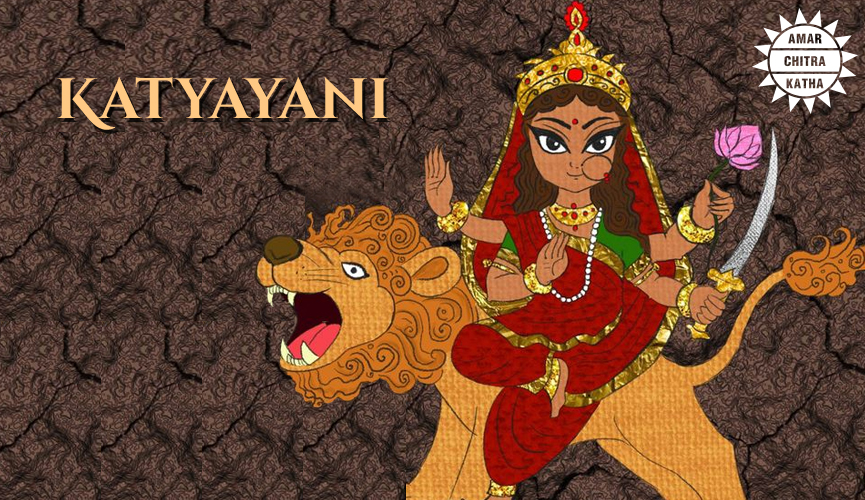
Goddess Durga manifested in this form to destroy the demon Mahishasura. The warrior form of Goddess Durga, Katyayani is fierce and armed with numerous weapons. Her vengeance led to the ultimate destruction of the powerful demon.
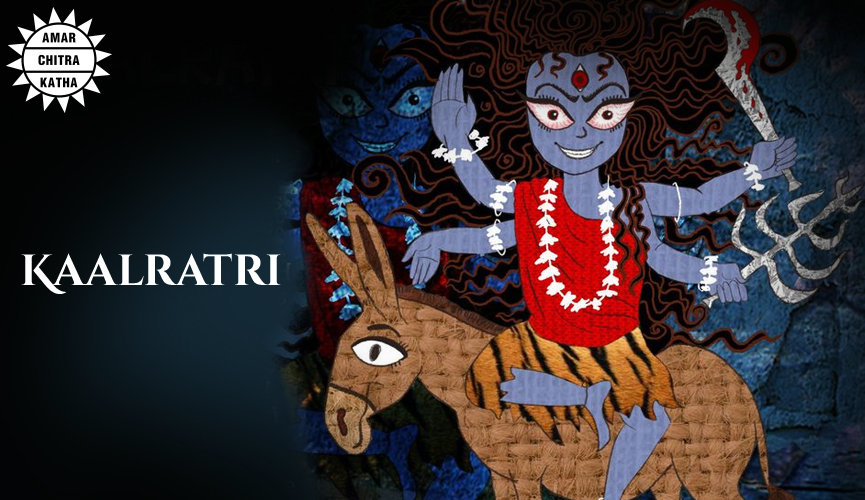
The most violent form of Goddess Durga is Kaalratri who manifested to slay the two demons, Chanda and Munda. She sprang from the third eye of Parvati and wreaked havoc until she killed the two asuras and their army. Kaalratri means the night of death. In this form, Goddess Durga rides a donkey and carries a deadly iron hook and a sword in her hands.
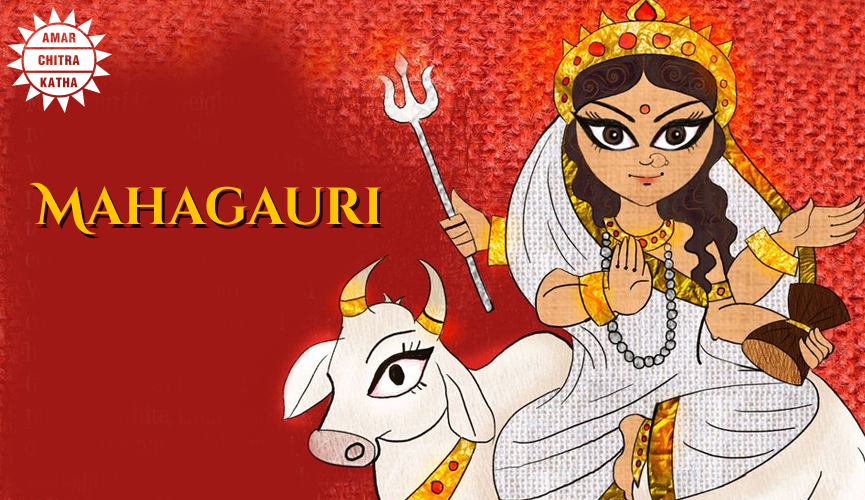
When Goddess Parvati went to fight the demons, Shumbha and Nishumbha, she transformed into the dark and fierce Kaushiki, leaving part of herself on Mount Kailasha to protect it. This part of herself, known as Mahagauri, is fair complexioned and very pure and clean. She provides knowledge and is the goddess of all achievements.
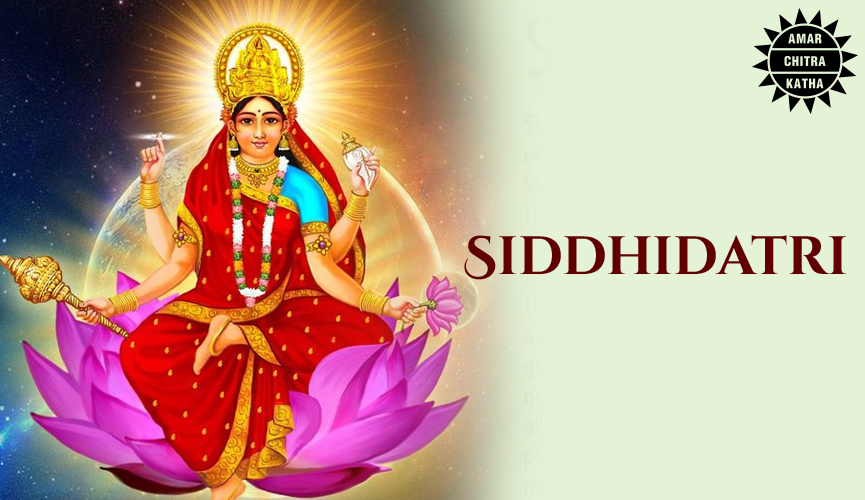
Siddhidatri is the Adi Shakti avatar of Durga. She existed as pure energy and had no physical form. Lord Rudra worshipped her for creating the universe and she appeared from the left half of Shiva. That is why she and Shiva represent the duality of the universe in the form of masculine and feminine energies. They unite to form Ardhanarishwara. Devi Siddhidatri sits on a lotus and rides a lion.
Read the stories of the powerful Hindu goddesses in our title ‘Shakti‘, available on the ACK Comics app, Kindle, Amazon, Flipkart, and other major e-tailers.
To receive more such stories in your Inbox & WhatsApp, Please share your Email and Mobile number.

Comic of The Month
The Naval Journey of India Book I
This book is the first of a three-book series that takes a deep and detailed look at India's Naval History and a deep insight into the lives of our men and women in white. But any series on the Indian Navy has to start at the very beginning - exploring India's celebrated maritime history. Join our little hero, Bharat, and his grandfather, Commodore Sagar, as they sail into the deep blue waters of time. Book I of The Naval Journey of India takes a sweeping look at India's maritime endeavours, how the seas impacted us over millennia and how the oceans made us who we are.